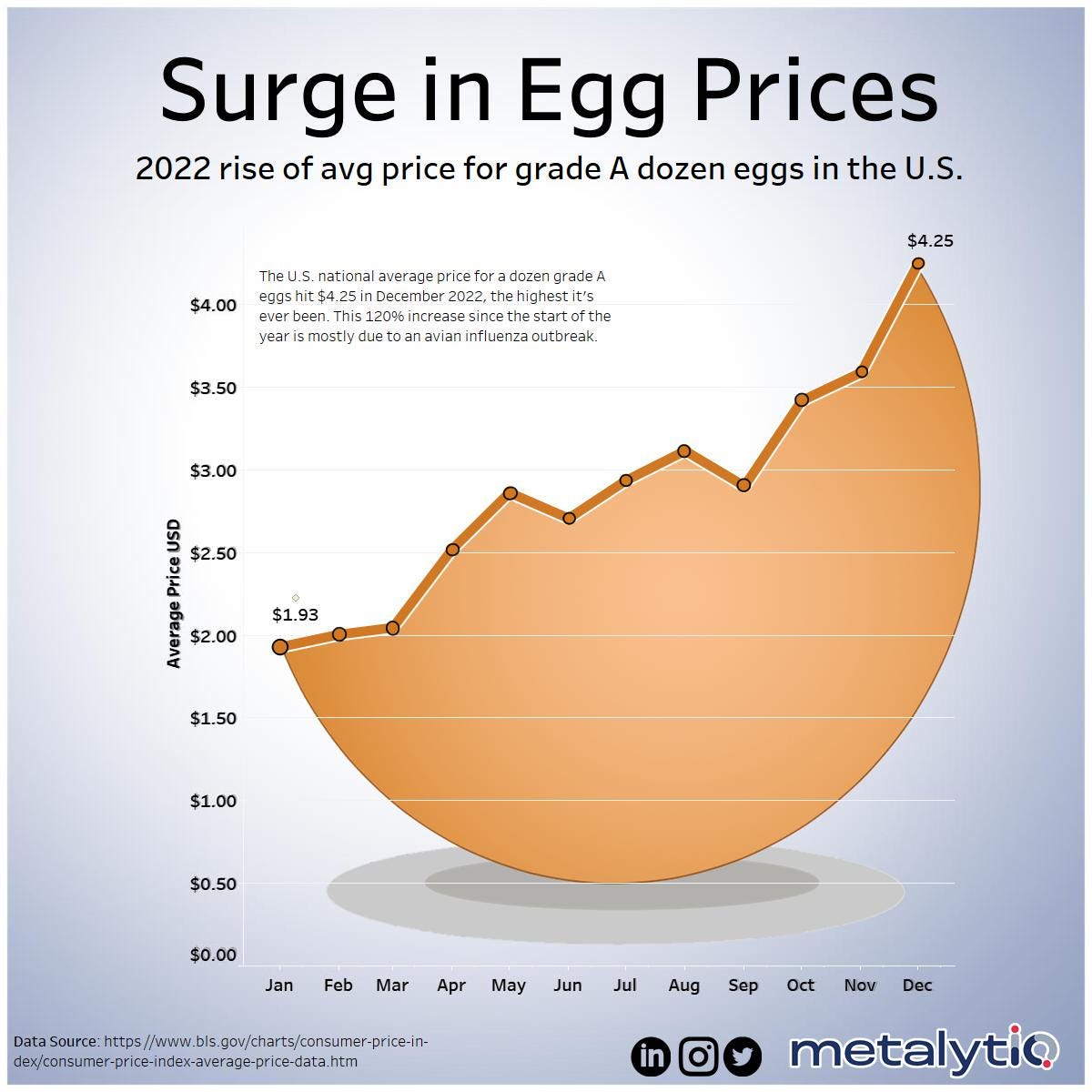Egg Abundance Returns
After a COVID policy supply chain disruption, chickens are back in business. Just as Julian Simon predicted.
Egg prices spiked to $4.25 a dozen in December of 2022. Were greedy chickens to blame?
A better appreciation can be gained by zooming out and looking at longer-term time prices. According the the Bureau of Labor Statistics, a dozen eggs were 84 cents in 1980. Today I can buy a dozen at my local Walmart for $1.24. Has the OEPC (Organization of Egg Producing Chickens) cartel been broken?
For the time it took an unskilled worker in 1980 to earn the money to buy one egg, that worker would get 2.62 eggs today. Eggs have become 162 percent more abundant. This suggests that egg abundance is increasing at a 2.27 percent compound annual rate, doubling in abundance every 31 years. This increase in egg abundance occurred at the same time U.S. population increased by 130 million, or 64 percent, from 203 million in 1980 to 333 million today. Population grew at a 1.16 percent compound annual rate. Egg abundance is growing almost twice as fast as population. We define superabundance as a situation where resources are increasing in abundance faster than population. Therefore, eggs are superabundant.
The great economist Julian Simon noted “A higher price represents an opportunity that leads inventors and businesspeople to seek new ways to satisfy the shortages. Some fail, at cost to themselves. A few succeed, and the final result is that we end up better off than if the original shortage problems had never arisen.”
Tip of the hat: Jeremy Horpendahl
You can learn more about these ideas in our new book, Superabundance, available at Amazon. Jordan Peterson calls it a “profoundly optimistic book.”
Gale Pooley is a Senior Fellow at the Discovery Institute and a board member at Human Progress.





